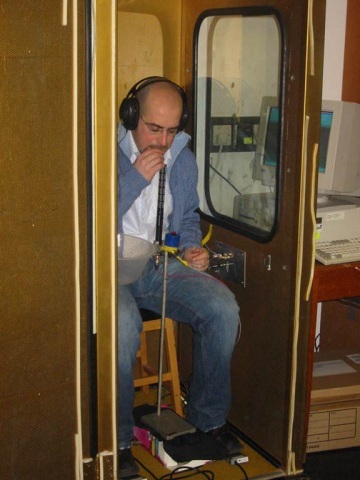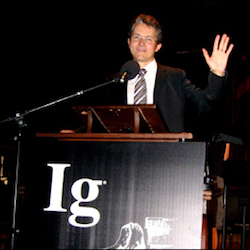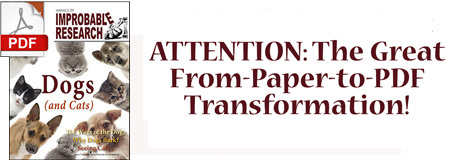Marc Abrahams's Blog, page 300
October 26, 2015
Social Touching Maps (taboo or not taboo)
The acceptability (or otherwise) of physically touching another person can depend on many factors – including the social relationship of the toucher and the touchee, and of course, where you touch them (that’s to say, not only the bodily region, but also the socio-geographic location). A research team from Aalto University and the University of Turku in Finland and the University of Oxford, UK, have for the first time, shown that:
“[…] the total bodily area allowed for touching is linearly dependent on the emotional bond with the toucher across a wide range of European cultures (Finland, France, Italy, Russia, and the United Kingdom), with the strength of two individuals’ social bond predicting, on average, 54% of the variance in spatial touching patterns.”
 As a result of three experiments involving a total of 1,368 multinational participants, the researchers were also able to confirm that:
As a result of three experiments involving a total of 1,368 multinational participants, the researchers were also able to confirm that:
“As expected, emotionally closer individuals in inner layers of the social network were allowed to touch wider bodily areas and for more reasons, whereas touching by strangers was primarily limited to the hands and upper torso. Genitals and buttocks formed clear ‘taboo zones’ [shown in black above] that only the emotionally closest individuals were allowed to touch. Frequency of social contact with an individual did not predict the area available for social touch, confirming that the experienced bond between the individuals, rather than mere familiarity, modulates social touching behavior in dyads.”
See: ‘Topography of social touching depends on emotional bonds between humans’ (in: PNAS 2015, published ahead of print, October 26)

New Yorker profile of Ig Nobel-winning chew-a-Pringle researcher’s research
 The taste-smell-sound-look-and-feel research of Ig Nobel Prize winner Charles Spence gets a good, sensory-rich going over, in a New Yorker profile called “Accounting for Taste,” by Nicola Twilley. It says, in part:
The taste-smell-sound-look-and-feel research of Ig Nobel Prize winner Charles Spence gets a good, sensory-rich going over, in a New Yorker profile called “Accounting for Taste,” by Nicola Twilley. It says, in part:
Outside the academy, the paper failed to generate any interest until 2008, when its authors were awarded the Ig Nobel Prize for Nutrition. The Ig Nobels are intended to “honor achievements that make people laugh, and then think,” but media coverage of Spence’s win focussed mostly on the former, with headlines that ranged from “BOFFIN GIVES EATERS SOUND ADVICE” to “WHY RESEARCH THAT?!” At first glance, the “sonic chip” experiment, as Spence fondly refers to it, does seem trivial. In reality, it was an elegant psychological trick, offering insight into the way the brain combines two separate sensory inputs—the crunching sound and the tactile oral sensation of a potato chip—into one multisensory perception. Spence lists the honor at the top of his curriculum vitae….
Other researchers have joined him in exploring this new territory, but “Charles is a pioneer,” Francis McGlone, a neuroscientist at Liverpool John Moores University, told me. “His contribution to the field of cognitive psychology is seminal.” Breslin said, “He’s pushing the frontier in all kinds of ways that I wouldn’t have predicted.” In 1997, at the age of twenty-eight, Spence was invited to set up his own research lab at Oxford, and his Ig Nobel is just one in a long list of accolades, including a 2003 award from the European Society for Cognitive Psychology, in recognition of his “outstanding contribution to cognitive psychology in Europe.” …
“These things might seem trivial or esoteric,” Spence said. “But they do exist, and most of us share them, so they must be pretty fundamental.” Scientists—Spence included—do not yet fully understand exactly why these sensory interactions occur, or even where in the brain most take place. In a review paper published earlier this year, Spence listed the most common explanations that have been offered….
One reason that the senses have almost always been studied in isolation is that it is remarkably difficult to disentangle them sufficiently to observe the effect that one might be having on another. Spence has managed to study them together by, as McGlone put it, “slipping in through the perceptual windows” created by sensory illusions….
The 2008 Ig Nobel Prize for nutrition was awarded to Massimiliano Zampini of the University of Trento, Italy and Charles Spence of Oxford University, UK, for electronically modifying the sound of a potato chip to make the person chewing the chip believe it to be crisper and fresher than it really is. (REFERENCE: “The Role of Auditory Cues in Modulating the Perceived Crispness and Staleness ofPotato Chips,” Massimiliano Zampini and Charles Spence, Journal of Sensory Studies, vol. 19, October 2004, pp. 347-63.) this photo shows Massimiliano Zampini munching a chip — they used Pringles, which are more consistent in shape and constitution than other chips — inside the booth where the munch-a-chip research was done:

BONUS: Video of Charles Spence telling about “Multisensory Experience and Coffee”:
BONUS (unrelated, mostly but not entirely): How a dead duck changed my life.

October 25, 2015
Drunk philosophers, studied in a bar in France
Ig Nobel Prize winner Laurent Bègue and colleague Aaron Duke have a new study about the effect of drunkenness on philosophy. The study is:
“The drunk utilitarian: Blood alcohol concentration predicts utilitarian responses in moral dilemmas,” Aaron A. Duke and Laurent Bègue, Cognition, 134 (2015): 121-127.
 The 2013 Ig Nobel Prize for psychology was awarded to Laurent Bègue [pictured here at teh Ig Nobel ceremony], Brad Bushman, Oulmann Zerhouni, Baptiste Subra, and Medhi Ourabah, for confirming, by experiment, that people who think they are drunk also think they are attractive. (REFERENCE: ” ‘Beauty Is in the Eye of the Beer Holder’: People Who Think They Are Drunk Also Think They Are Attractive,” Laurent Bègue, Brad J. Bushman, Oulmann Zerhouni, Baptiste Subra, Medhi Ourabah, British Journal of Psychology, Volume 104, Issue 2, pages 225–234, May 2013.)
The 2013 Ig Nobel Prize for psychology was awarded to Laurent Bègue [pictured here at teh Ig Nobel ceremony], Brad Bushman, Oulmann Zerhouni, Baptiste Subra, and Medhi Ourabah, for confirming, by experiment, that people who think they are drunk also think they are attractive. (REFERENCE: ” ‘Beauty Is in the Eye of the Beer Holder’: People Who Think They Are Drunk Also Think They Are Attractive,” Laurent Bègue, Brad J. Bushman, Oulmann Zerhouni, Baptiste Subra, Medhi Ourabah, British Journal of Psychology, Volume 104, Issue 2, pages 225–234, May 2013.)
Emma Green profiles the new, drunken philosophers study, in The Atlantic. The profile begins:
The Cold Logic of Drunk People
At a bar in France, researchers made people answer questions about philosophy. The more intoxicated the subject, the more utilitarian he or she was likely to be….
(Thanks to Estrella Burgos for bringing this to our attention.)
BONUS: A look back at Laurent Bègue’s essay “Le jour où j’ai reçu un IG Nobel” [The day I received an Ig Nobel Prize]

Do not distribute?
October 24, 2015
When are World Standards Day?
The world is still trying, and not trying, to standardize World Standards Day.
This year, World Standards Day was celebrated on October 14, 2015.
In the USA, World Standards Day was celebrated on September 28-October 2, 2015.
Last year, 2014, things were different. World Standards Day was on October 14, 2014. The USA celebrated World Standards Day on October 20-24, 2014.
The year before, in 2013, most of the world celebrated World Standards Day on October 14. But the USA celebrated on October 3, 2013.
And so on.
You can download the 2015 World Standards Day Poster.
BONUS: The excitement of the 2015 World Standards Day Paper Competition.

October 23, 2015
Sham acupuncture needles – how do they perform?
 Somewhere around 2002, acupuncture expert Professor Jongbae Jay Park, KMD, PhD, Lac (now at the University of North Carolina at Chapel Hill School of Medicine, US) developed the Park Sham Device (PSD) – a telescoping faux needle, or acu-non-puncture needle [pictured]. It was subsequently evaluated by a research team from The University of Exeter and Plymouth, UK, and the results published in Acupuncture in Medicine, 20(4):168-174 ‘Validating a New Non-penetrating Sham Acupuncture Device: Two Randomised Controlled Trials’ Based on the experimental tests the team formed two conclusions:
Somewhere around 2002, acupuncture expert Professor Jongbae Jay Park, KMD, PhD, Lac (now at the University of North Carolina at Chapel Hill School of Medicine, US) developed the Park Sham Device (PSD) – a telescoping faux needle, or acu-non-puncture needle [pictured]. It was subsequently evaluated by a research team from The University of Exeter and Plymouth, UK, and the results published in Acupuncture in Medicine, 20(4):168-174 ‘Validating a New Non-penetrating Sham Acupuncture Device: Two Randomised Controlled Trials’ Based on the experimental tests the team formed two conclusions:
“We conclude that the newly developed PSD is valid as a control procedure for trials of the efficacy of acupuncture, or, more specifically, the needle penetration aspect of treatment.”
“Our second conclusion arising from this work is perhaps more profound. Naïve volunteers cannot distinguish between real needles and the sham device, yet are much more likely to experience de qi with the former than the latter.”

Virginity: a lack of standards
Be aware that there is no ISO standard for this:
“A New Bride Presented Her Dad With a “Virginity Certificate” At Her Wedding” — October 22, 2015 report, in Mic
BONUS: In 2015, as in previous years, there is also no universally adhered-to standard for the date of World Standards Day.

Twenty-six co-winners of the 2009 Ig Nobel economics prize have been sentenced to prison
Twenty-six co-winners of the 2009 Ig Nobel economics prize have been sentenced to prison, with perhaps more on the way, according to an October 14, 2015 report in Iceland Magazine:
In two separate rulings last week, the Supreme Court of Iceland and the Reykjavík District Court sentenced three top managers of Landsbankinn and two top managers of Kaupþing, along with one prominent investor, to prison for crimes committed in the lead-up to the financial collapse of 2008. With these rulings the number of bankers and financiers who have been sentenced to prison for crimes relating to the financial collapse has reached 26, and a combined prison time of 74 years….
The 2009 Ig Nobel Prize for economics was awarded to the directors, executives, and auditors of four Icelandic banks — Kaupthing Bank, Landsbanki, Glitnir Bank, and Central Bank of Iceland — for demonstrating that tiny banks can be rapidly transformed into huge banks, and vice versa — and for demonstrating that similar things can be done to an entire national economy. (REFERENCE: Report of the Special Investigation Commission, issued April 12, 2010.)

October 22, 2015
Improbable Research is converting from paper to PDFs
After 21 years, our magazine — Annals of Improbable Research — is abandoning paper. All issues of the magazine henceforth will be published in PDF form.
Introductory NEW SUBSCRIPTION price: $15/year .
This special price is available, worldwide, ONLY UNTIL OCTOBER 31, 2015.
After October 31, new subscriptions will be $25/year.
Please spread the word!
The November/December 2015 issue (vol. 21, no. 6) will be the final issue we also publish on paper.
SUBSCRIBE (or buy back-issues)
(PERPLEXED about how to subscribe? THIS may help.)

Comedy, laughter, kissing and psychosomatics
As can be seen, the video above features comedy, laughter and kissing (not necessarily in that order). Now for an Improbable question: ‘How might a psychosomaticist view such things?’ Those looking for answers might be well advised to examine the pages of The Journal of Psychosomatic Research.
“[…] a multidisciplinary research journal covering all aspects of the relationships between psychology and medicine. The scope is broad and ranges from basic human biological and psychological research to evaluations of treatment and services.”
Thus, may we recommend some sample papers from the journal :
▪ Laughter elevates the levels of breast-milk melatonin
▪ Kissing selectively decreases allergen-specific IgE production in atopic patients [a paper that was honored with the 2015 Ig Nobel Prize for medicine]

Marc Abrahams's Blog
- Marc Abrahams's profile
- 14 followers







